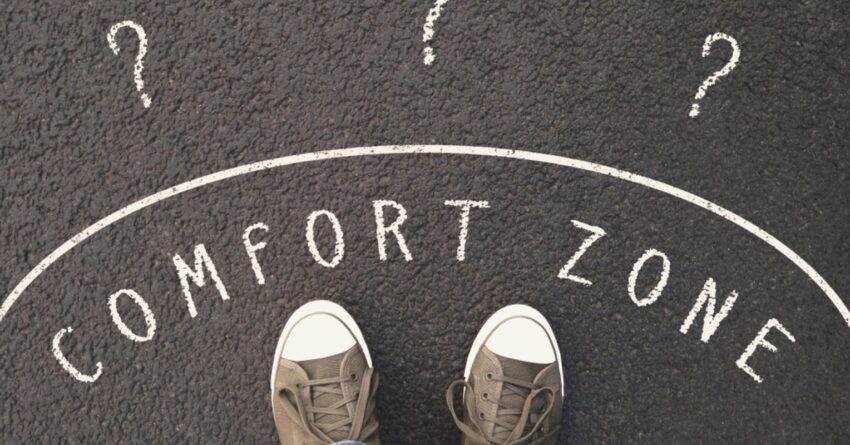A common theme underlying most anxiety is discomfort with or fear of uncertainty. The more uncomfortable you are with uncertainty, the more likely you are to struggle with anxiety. For many, anxious thoughts and behaviors are an attempt to know the unknowable, or to avoid action until the unknowable is known. These are unachievable pursuits that leave you trapped in rumination, avoidance, and decision paralysis.
Eckhart Tolle, author and mindfulness teacher, has said, “When you become comfortable with uncertainty, infinite possibilities open up in your life. It means fear is no longer a dominant factor in what you do and no longer prevents you from taking action to initiate change…If uncertainty is unacceptable to you, it turns into fear. If it is perfectly acceptable, it turns into aliveness, alertness, and creativity.”
So, how does one become comfortable with uncertainty?
First, it is important to recognize that it is not a natural state for the human mind to feel comfortable with uncertainty. To do so requires intention and practice. The human mind, in its attempt to keep us safe, equates uncertainty with potential loss—loss of life, safety, security, pride, or connection. By anticipating problems and giving the brain problems to solve, we falsely create a sense of safety—believing that anticipating bad outcomes will help us to prepare for them. In theory, this may sound helpful; however, in reality, it is not. We cannot know the unknowable. Our efforts to do so are exhausting and unproductive. And the orientation toward all that can go wrong keeps us trapped in fear.
With this understanding, you can engage a number of practices to grow your comfort with uncertainty.
1. Focus on what you know.
This refers to two forms of knowing: The facts you know to be true in the present moment and your truth. By focusing on what you know to be true, you keep your focus on the present, not potential future bad outcomes. By focusing on your truth, you bring your attention to the things you value and your priorities. You may have noticed that when you are fearful of making decisions, your focus tends to be more on what you don’t want to happen. This keeps your attention on fears and negative outcomes. When you can shift your focus to what you do want—including your values, priorities, and goals—you can better move forward with making decisions or taking actions that align with what you want. You do not need to feel comfortable to make movement toward what you value. The goal itself and embodying your values can serve as motivation and a counterbalance to your fears. Both can exist side by side. The more you practice shifting your focus to what you want, the easier it will be to take forward-moving action, even when you feel uncomfortable.
2. Shift your focus from “What if” (fear of the unknown) to “Even if.”
This reframe places the emphasis on your ability to cope with whatever may happen, rather than the fear of what may happen. The more you are able to recognize your resources—both internal and external—to cope with whatever happens, the less fear you will have of the unknown.
3. Consider all the possibilities that exist, not just the fears.
George Adair famously said, “Everything you’ve ever wanted sits on the other side of fear.” This is a reminder that beyond our fears lay our dreams, growth, and fulfillment. In moments when you are focused on all that might go wrong, shift your focus to all that you might gain—to what might go right. This helps to balance out the fears with the good possibilities that also exist.
4. Accept that mistakes or failure may be an outcome.
This may sound like the hardest strategy to practice. After all, the entire purpose of catastrophizing is to protect yourself from mistakes and failure—which is exactly why considering that this may not be such a terrible outcome lessens the impact of catastrophizing. You may think about other moments in your life when you made a mistake (because, let’s face it—we all make mistakes) and consider what the outcomes of those mistakes were. This can help you to put the fear of making a mistake in proportion. You might ask yourself, “So what if that bad outcome happened? What then?” Sometimes allowing yourself to sit in that possibility and consider what that might be like leads you to the conclusion that it would not be the end of the world or intolerable.
5. Practice self-soothing and emotion regulation.
Finding ways to attend to your uncomfortable feelings in a way that feels soothing and nurturing is an important skill for all to develop. This can look like sitting quietly for a moment and just noticing your uncomfortable feelings and where you feel them. Relaxing any part of your body where you feel tension. Placing one hand on your heart and another on your stomach while you take slow deep breaths is a way of caring for yourself and your feelings that can feel soothing and calming. Other forms of self-care that help you to feel more regulated, such as going for a walk, dancing, engaging with a beloved pet, taking a long shower or a hot bath, and drinking a cup of hot tea are examples of practices that may help you feel more calm and regulated.
The more you practice these skills, the more comfortable you will become with uncertainty—and the more fully you will be able to live your life.
